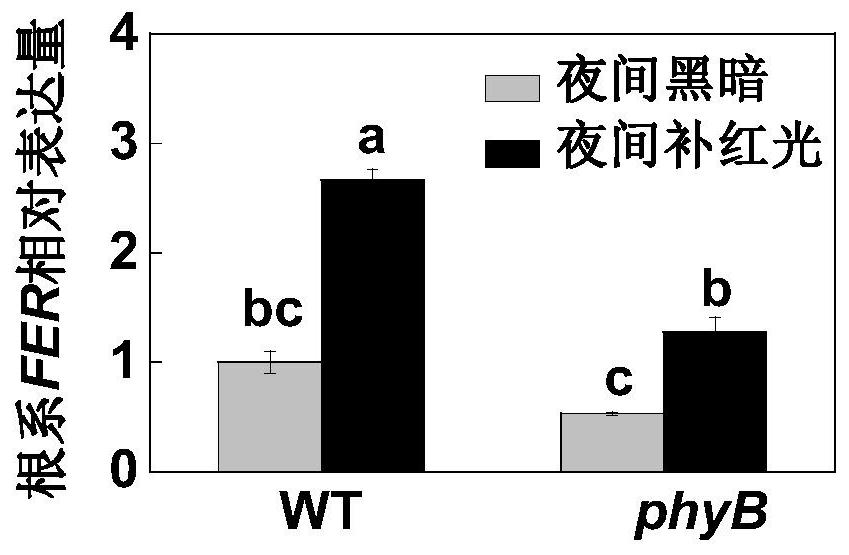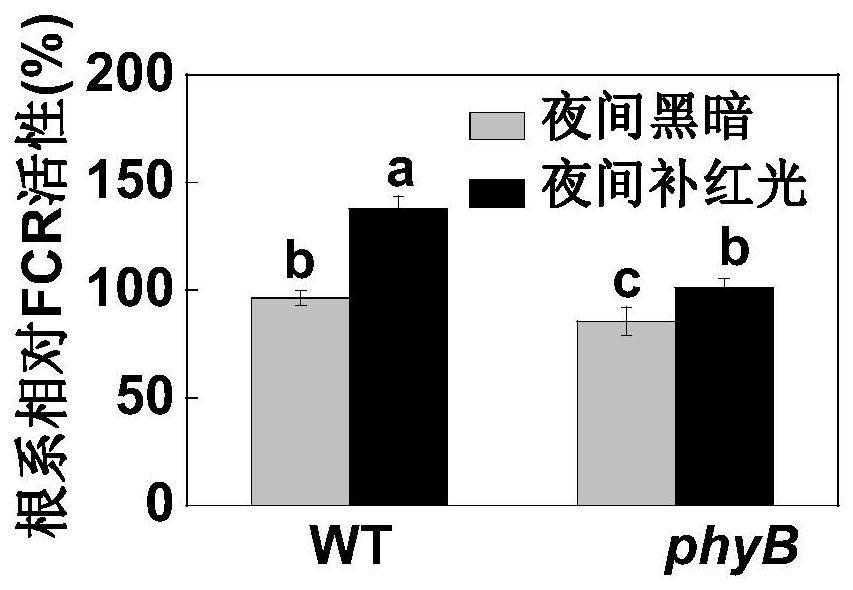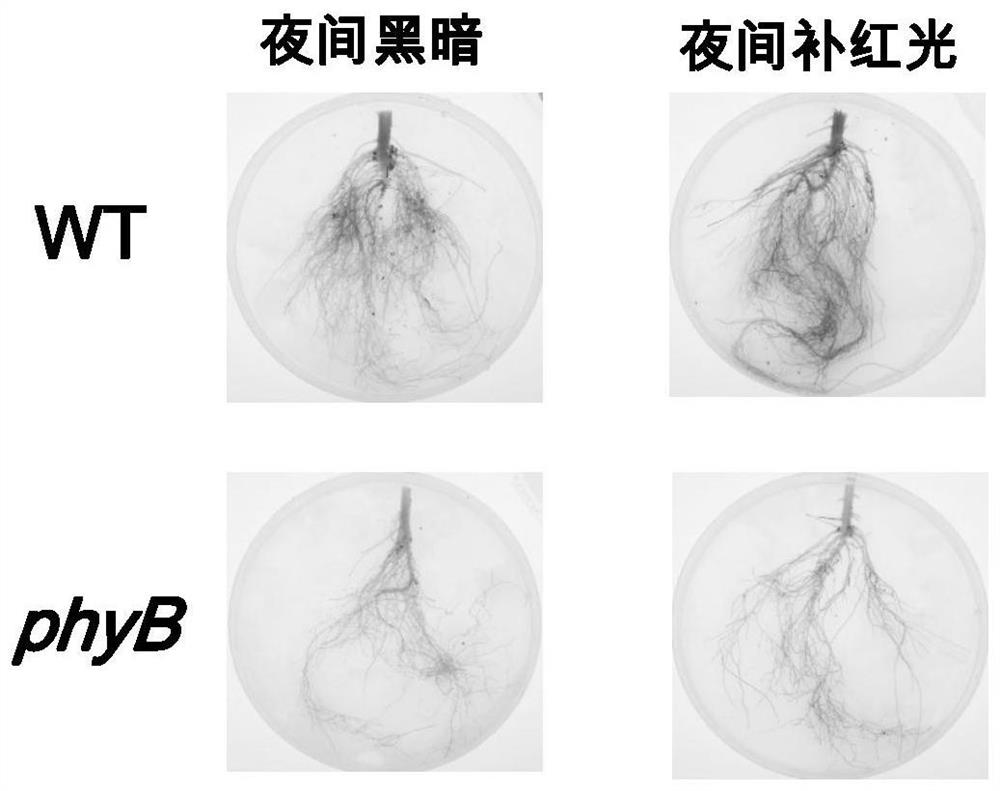A method for increasing iron content in tomato fruit
A technology of iron content and tomato, applied in the research field of tomato fruit quality, can solve the problem of low iron content, achieve the effect of increasing iron content, shortening time, and improving nutritional quality
- Summary
- Abstract
- Description
- Claims
- Application Information
AI Technical Summary
Problems solved by technology
Method used
Image
Examples
Embodiment 1
[0025] Embodiment 1: Observation of the effect of supplementing red light at night on the iron absorption capacity of tomato plants, specifically comprising the following steps:
[0026] The tomato varieties used in the experiment were wild-type Moneymaker and the red light receptor mutant phyB. The seeds were sown in 50-well plug trays filled with pure vermiculite medium, with one seed per hole. After emergence, water according to the water content of the substrate to keep the substrate moist. When the three leaves of the seedlings are in one center, remove the seedlings, clean them and put them into Hoagland's nutrient solution.
[0027] 1. Under normal conditions, the growth environment of the wild type and phyB mutants is 25°C during the day, 20°C at night, 8 hours of light, and 300 μmol m -2 the s -1 .
[0028] 2. The wild type and phyB mutants supplemented with light were supplemented with red light with a wavelength of 660nm after 8 hours of normal light, and the supp...
Embodiment 2
[0037] Embodiment 2: Carry out red light supplement treatment to tomato plant at night, specifically comprise the following steps:
[0038] The tomato varieties used in the experiment were wild-type Moneymaker and the red light receptor mutant phyB. The seeds were sown in 50-well plug trays filled with pure vermiculite medium, with one seed per hole. After emergence, water according to the water content of the substrate to keep the substrate moist. When the seedlings have three leaves and one heart, they will be transplanted into the nutrient pot.
[0039] 1. Transplant the tomatoes in the nutrient bowl into the greenhouse.
[0040] 2. Install the LED light equipment with 660nm red light wavelength on the top of the tomato plant, 0.4-0.8 meters away from the crown.
[0041] 3. Supplement light for 6 hours at night, and the light intensity is 20μmol·m -2 ·s -1 , which lasts until the fruit is harvested.
[0042] 4. Pick ripe tomato fruits about 50 days after flowering, and ...
Embodiment 3
[0046] Embodiment 3: Supplementing different intensities of red light to tomato plants at night, specifically comprising the following steps:
[0047] The tomato variety used in the experiment was wild-type Moneymaker, and the seeds were sown in 50-hole trays filled with pure vermiculite medium, with one seed per hole. After emergence, water according to the water content of the substrate to keep the substrate moist. When the seedlings have three leaves and one heart, they will be transplanted into the nutrient pot.
[0048] 1. Transplant the tomatoes in the nutrient bowl into the greenhouse.
[0049] 2. Install the LED light equipment with 660nm red light wavelength on the top of the tomato plant, 0.4-0.8 meters away from the crown.
[0050] 3. Supplement 10 μmol·m at night -2 ·s -1 , 20μmol·m -2 ·s -1 , 30μmol·m -2 ·s -1 , 50μmol·m -2 ·s -1 The intensity of the red light lasts for 4-6 hours until the fruit is harvested.
[0051] 4. For the ripe tomato fruit about 5...
PUM
 Login to View More
Login to View More Abstract
Description
Claims
Application Information
 Login to View More
Login to View More - R&D
- Intellectual Property
- Life Sciences
- Materials
- Tech Scout
- Unparalleled Data Quality
- Higher Quality Content
- 60% Fewer Hallucinations
Browse by: Latest US Patents, China's latest patents, Technical Efficacy Thesaurus, Application Domain, Technology Topic, Popular Technical Reports.
© 2025 PatSnap. All rights reserved.Legal|Privacy policy|Modern Slavery Act Transparency Statement|Sitemap|About US| Contact US: help@patsnap.com



